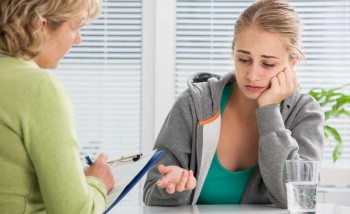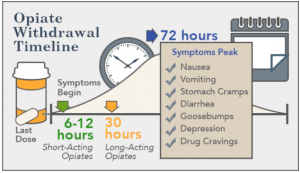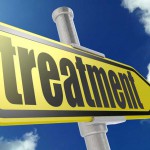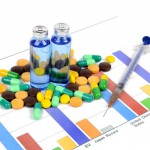Opiate Abuse Treatment

Symptoms of Opiate Withdrawal
While alcohol abuse is on the decline, heroin use is rising. Heroin, according to emergency medicine specialists, is the opiate most commonly abused, but they also note abuse of codeine, fentanyl, the black tar form of heroin, methadone, and morphine.
At the same time, in hearings on “Oxycontin: Its Use and Abuse in August of 2001, before the Committee on Energy and Commerce in the House of Representatives, Representative James C. Greenwood, chairman of the Subcommittee on Oversight and Investigations pointed out that law enforcement officials were discovering that OxyContin® was surpassing heroin and cocaine use in some places. The 2004 National Survey on Drug Use and Health (NSDUH) corroborates the rise in OxyContin® use, reporting that the number of new nonmedical users of Oxycontin® rose from 21,000 in 1995 to 721,000 in 2003, while in 2004, it is estimated that 118,000 people used heroin for the first time. In any case, opioids are at the forefront of the drugs for which withdrawal and overdose require treatment.
Symptoms of withdrawal from opioids – which may occur even in legal long-term use (in which case, the issue is physical dependence, not addiction) – include the following:
- restlessness
- pain in bones and muscles
- insomnia
- diarrhea
- nausea or vomiting
- cold flashes with goose bumps (the origin of the term “cold turkey”)
- involuntary leg movements
The symptoms may resemble a serious case of the flu, and whether a patient who presents in the ER is suffering from withdrawal or an infection must be determined. Withdrawal can begin just hours after the most recent use, and though it is uncomfortable, it is not life-threatening.
Other complications of chronic use of opiates are infectious. Patients who are opiate addicts are at high risk for HIV infection and AIDS-related pneumonias. They may also suffer from skin abscesses at the point of injection, cellulites, pulmonary edema, and hepatitis, among other things.
Opiate Abuse Treatment
Treatment for an overdose is similar for the various opioids, and depending on time since ingestion, may include a combination of the following:
- Medicines to treat symptoms, such as depressed respiration
- Treatments to remove the pain killer from the system, such as
- Activated charcoal
- Laxatives
- Gastric lavage (washing out the stomach)
- Intravenous fluids
In the case of overdose, a different narcotic (called an antagonist) may be administered to reverse effects of the overdosed substance. Treatment for addiction includes pharmacological substitutes that relieve symptoms and reduce cravings, such as methadone, buprenorphine, and levo-alpha-acetyl-methadol (LAAM), which may be given to assist in treatment. Daily doses of methadone both eliminate withdrawal symptoms as well as relieving drug cravings. LAAM alters the effects of opiates for up to three days. These measures counter the euphoria of the addictive drug if the patient tries taking it.
Treatment may be specially tailored if the opioid was taken in combination with another substance (such as Vicodin®, which contains acetaminophen as well as hydrocodone).
There can be several symptom peaks during withdrawal, at 48 hours and 72 hours, but symptoms generally subside in about 1 week, with heavily dependent users sometimes experiencing milder symptoms for up to 6 months.
Opiate Detox
Detox is the most difficult part of stopping a drug addiction. The first week to two weeks is the most severe. Common symptoms many people experience as the body tries to adjust to the cravings without the “fix” are:
- Irritability
- Insomnia
- Diarrhea
- Night Sweats
- Depression
- General Aches and Pains
While there are some over-the-counter remedies that can help with some of these symptoms, one must be very careful in the drugs they choose to help them in their recovery and treatment. Ibuprofen or Naproxen may be taken for aches and pains, valerian root or kava root may be effective in helping with the insomnia, but probably the best help is a regular regimen of a healthy diet, exercise, fresh air and sunshine. A combination of these can help combat the cravings and lessen the severity of the depression and irritability.
Depending on the schedule (ranking of the drugs properties that indicate how addictive the drug is) ranking of the drug one is addicted to will have some effect on how severe withdrawal symptoms are and how long recovery time is as well as how long the cravings will continue after detox. For many people a drug treatment center is the most effective form of treatment because they have a lot of support to help them through each stage of recovery.
Opiate Abuse Treatment Sources
- nlm.nih.gov
- emedicine.com
- drugabuse.gov
- energycommerce.house.gov
- drugabusestatistics.samhsa.gov
- americanaddictioncenters.org






